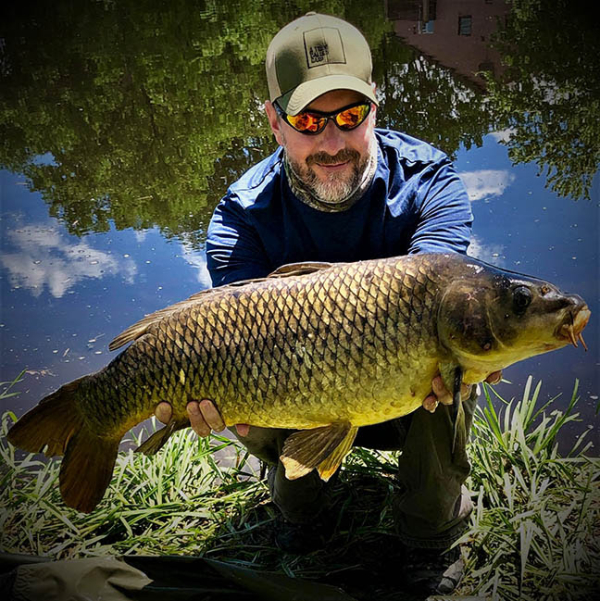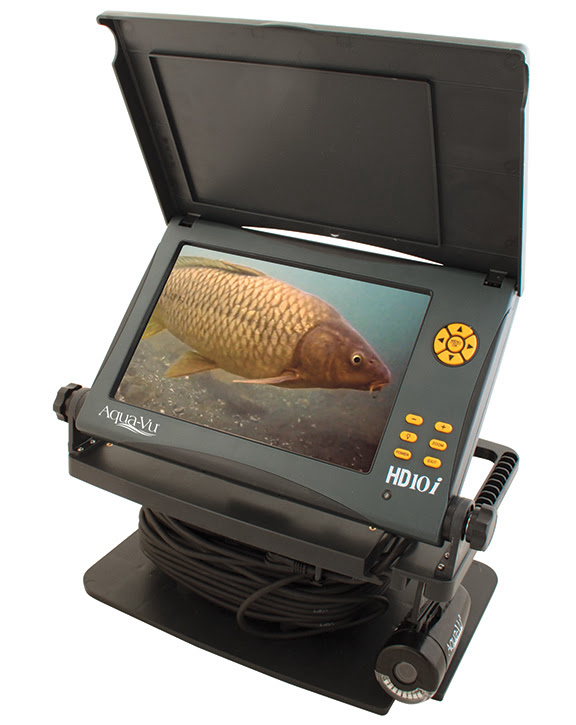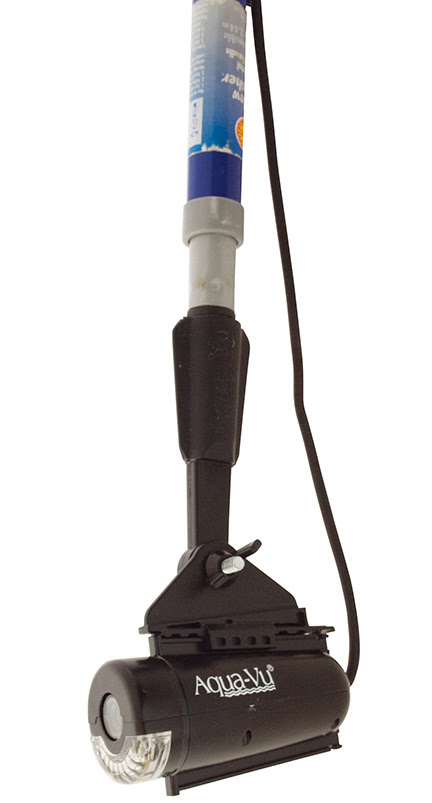Add an underwater camera to your arsenal and learn where the giants await. Carp specialist Nathan Cutler calls his Aqua-Vu his most important learning tool. Carp specialist Nathan Cutler calls his Aqua-Vu his most important learning tool.from The Fishing Wire Crosslake, MN – Nathan Cutler remembers the first big carp he ever hooked. Standing on shore that day in 1999, exhausted and beaten, Cutler lamented the battle, the lost fish and the damage it had inflicted upon his gear. Among the casualties: The carp had stripped 150-yards of line from his spool, straightened the hook, melted the gears in his reel, burned the eyelet inserts on his rod and stripped the reel right off its seat. That was the day the lifelong Canadian angler decided to learn all he could about this massively under-appreciated creature, the common carp—and that meant immersing himself in the underwater domain of his favorite fish. “I’ve learned more from my Aqua-Vu HD underwater camera in a year than I probably could have in decades of regular fishing,” says Cutler, who operates ImprovedCarpAngling.com and a corresponding YouTube channel featuring spectacular underwater carp footage. “As a scientist, I love to test out every new tactic, bait and rig and watch how fish react. Not only does the Aqua-Vu camera allow me to record the fish in their natural environment, but more importantly, I can view things as they happen in real time. This lets me adjust rigs and baits on the fly to see what works and what doesn’t. ”At home near the crystalline waters of Lake Huron and the St. Lawrence River, Cutler enjoys immediate access to numerous shore fishing spots, each one hosting concentrations of carp up to 40-pounds or more. “I have no idea why more anglers don’t target them,” wonders Cutler. “Carp are one of the largest, hardest-pulling catch-and-release species that live in abundance close to shore. You can set up pretty much anywhere along the shoreline here and enjoy a very successful day of fishing.” On most of his shore spots, including breakwalls and marina docks, Cutler finds it easy to deploy his Aqua-Vu HD10i camera by dropping it right off the bank, dock or pier. On shallow flats, Cutler simply wades out and places the camera by hand. He then casts his fishing rig and bait to lie within several feet of the camera lens. “One cool thing about carp angling, which makes using the camera very easy, is that you usually bait or chum an area and wait for fish to come to you,” he notes. “I’ve designed a mount for the Aqua-Vu that acts as an anchor, positioning the lens at any angle I want, adjacent to my fishing area. I use the Aqua-Vu XD Pole Mount attached to a base of concrete poured into a 5-gallon bucket.” Instructions for Cutler’s camera stand can be found in a YouTube video explaining the setup. On-Screen Observations In the past year since his first underwater carp forays, Cutler has observed some truly fascinating fish behaviors, as well as the hidden habits of other aquatic animals. “I’ve seen cormorants and otters swooping at baitfish in 25 feet of water,” he says. “I see salmon all the time that seem intrigued by the camera and like to bump and knock it over. Smallmouth bass often stop and look directly into the lens before moving on. When all the fish suddenly clear out, it usually means a big pike is about to swim through the lens. You also can’t help but notice all the round gobies down there. In real time they’re difficult to spot because they move in bursts, stop and disappear into bottom. When I speed up the recorded footage it looks like the whole bottom is moving.”  Aqua-Vu HD10i Underwater Viewing System Aqua-Vu HD10i Underwater Viewing SystemCarp, known by their most ardent angling fans as highly intelligent, discerning and wary, exhibit some fascinating underwater preferences. “I’ve been a fan of the simple hair rig for years and thought by presenting my bait a few inches above bottom over my pre-baited areas, fish would notice it quicker and I’d catch more fish. “Actually, the camera showed me that the fish would nudge the rig, appear to feel the hook and avoid it altogether. Only about one of every ten fish I saw on screen took the bait without nudging the rig first. That was a huge revelation. As soon as I pinned the hook to the bottom, with the bait barely floating above, my catch rate nearly doubled.” Cutler’s camera work also revealed that carp often detect and avoid his fishing line. “I’ve watched carp on camera detect my line and bolt off in the opposite direction. To combat this, I now use a ‘back lead,’ or a a second weight attached to your line nearest the rod tip, pinning the line to the bottom so fish are less likely to see it. Line visibility isn’t something many anglers ponder, but with carp, it can be a major factor. ”The camera screen further surprised Cutler with the sheer number of fish haunting his pre-baited areas. “Many days I’ll be sitting without a nudge on my line. I’ll drop the camera to see if my rig and bait are presented properly and I’m always shocked by the number of fish visiting my baited area—up to 15 different carp moving in and out of frame, taking mouthfuls of bait as they feed.”  The XD Pole Adaptor allows for a variety of viewing angles and applications The XD Pole Adaptor allows for a variety of viewing angles and applicationsWhat Carp Eat Cutler says the camera has proven to him that carp favor canned sweet corn from the grocery store. “No idea why North American carp love it so much, but I’ve learned if I’m targeting a new area, I always toss in a can of Jolly Green Giant and lower the camera. With other baits, it can take a long time and a lot of chumming before carp stop to investigate or eat it. “If you pre-bait an area for an extended duration, you can have great success catching larger fish with other baits, especially boilies (a hardened, flavored dough bait that fends off smaller nuisance fish.) Another great carp bait is a pack-bait recipe combining sweetcorn and bread, which nearly always produces fish. ”Interestingly, Cutler frequently observes carp eating mouthfuls of invasive mussels. “I see carp eating zebra mussels on the camera all the time. I believe it’s why carp grow so large in the St. Lawrence River and the Great Lakes. Come fall when temperatures drop, carp move in to deeper rocky areas with heavy mussel concentrations. Carp sometimes feed so heavily on zebra mussels that they develop red sores on the roof of their mouth resulting from the sharp shell edges.” Carp crush shells and ingest the soft-bodied mollusks with special pharyngeal teeth in their throat.“After watching carp in the same area, you begin to differentiate certain specific fish by visible characteristics, such as scale patterns, scars, etc.,” he notes. “For me, a fun challenge is to target individual big carp I see on the camera screen. We call it ‘specimen hunting.’ I’ve named one particular carp Popeye, and I’ve been trying to catch him for two years now. I see him on almost every outing, but I’m still waiting for him bite my rig. Hopefully, next time.” |